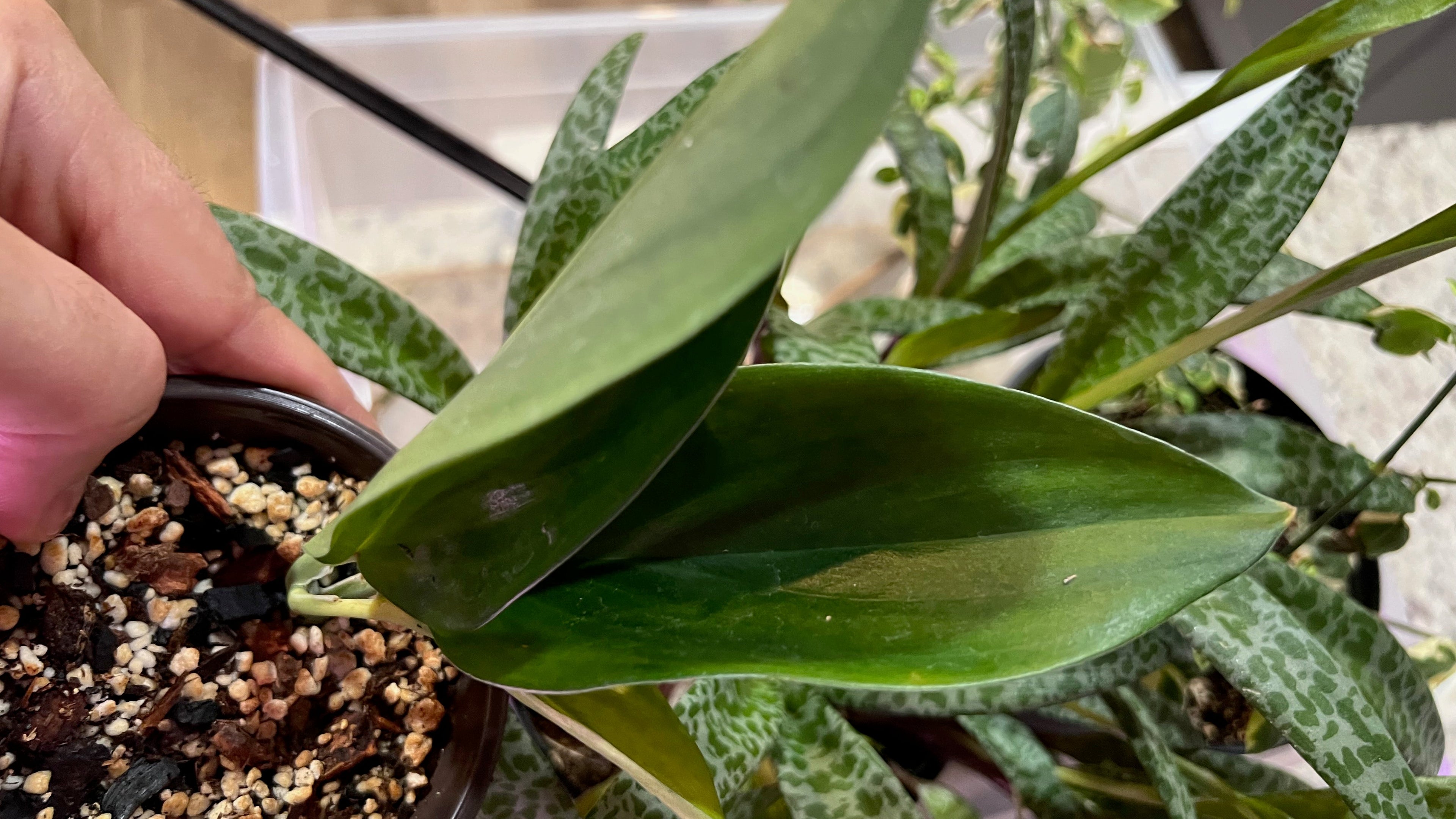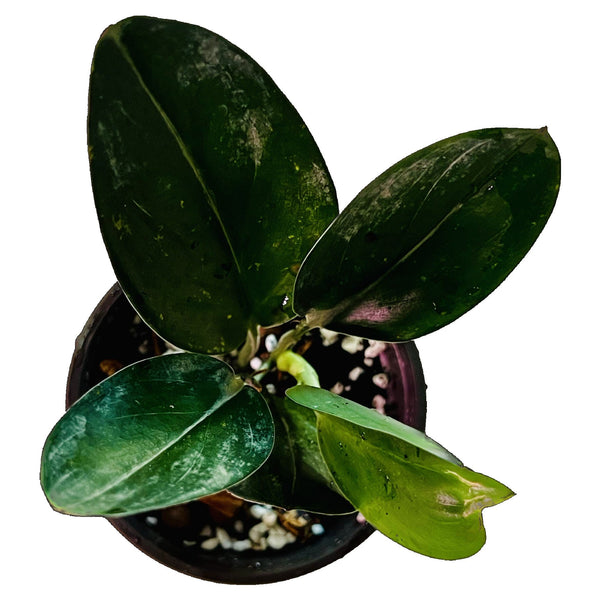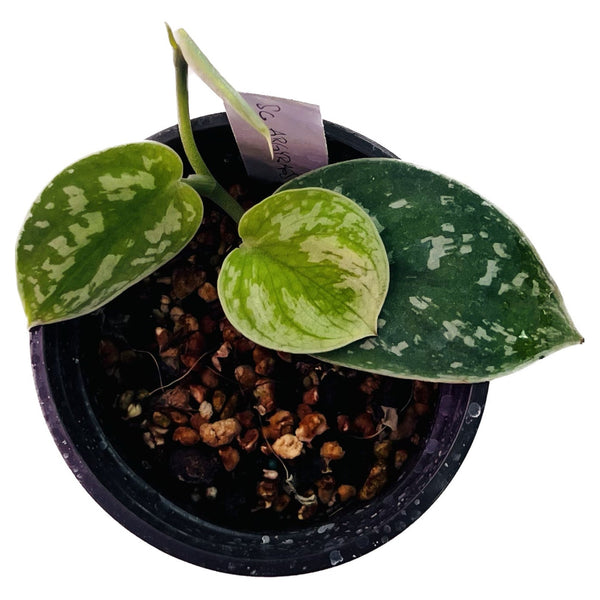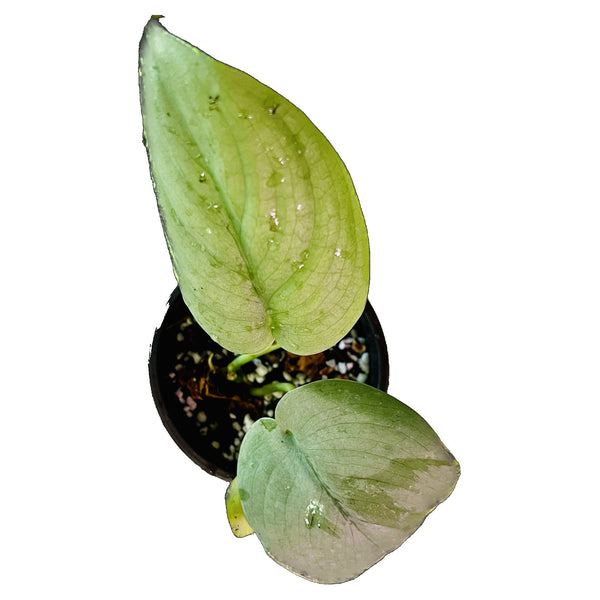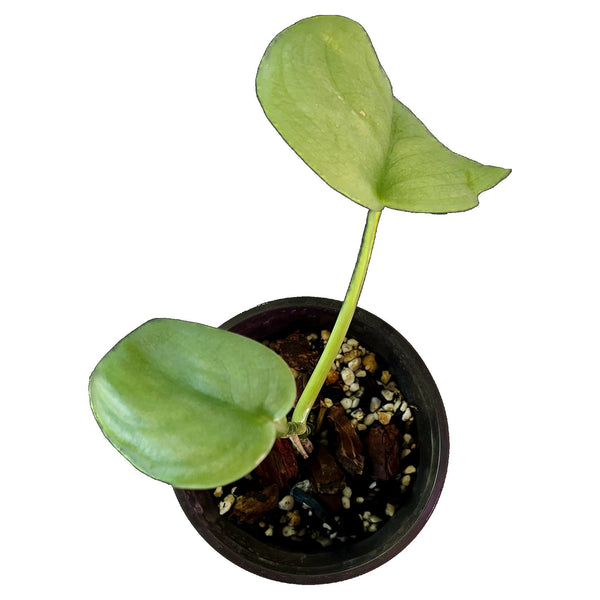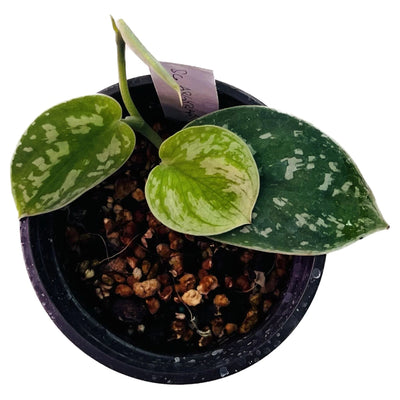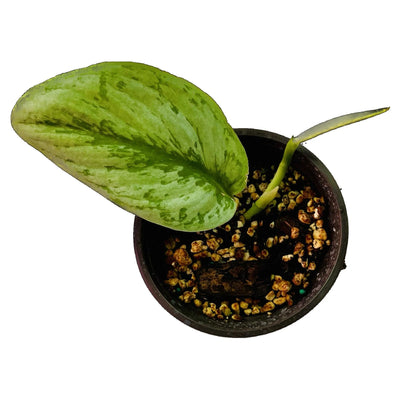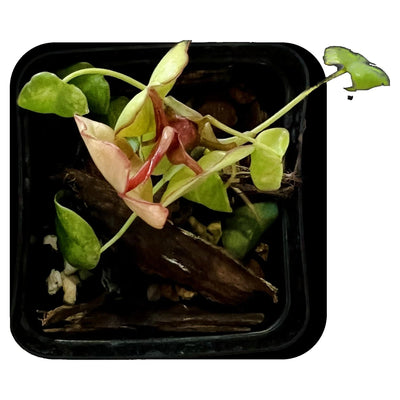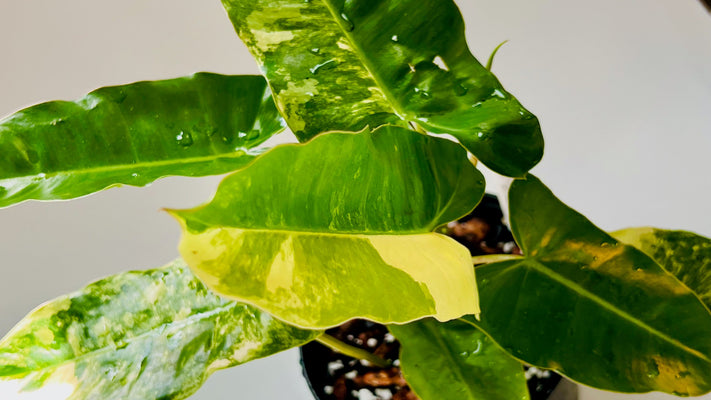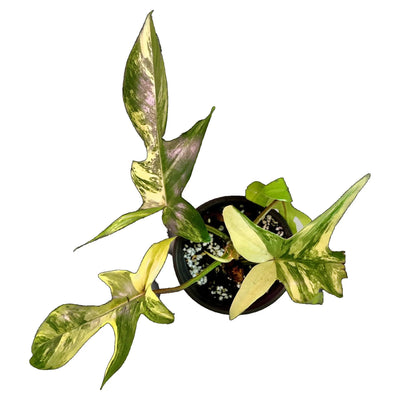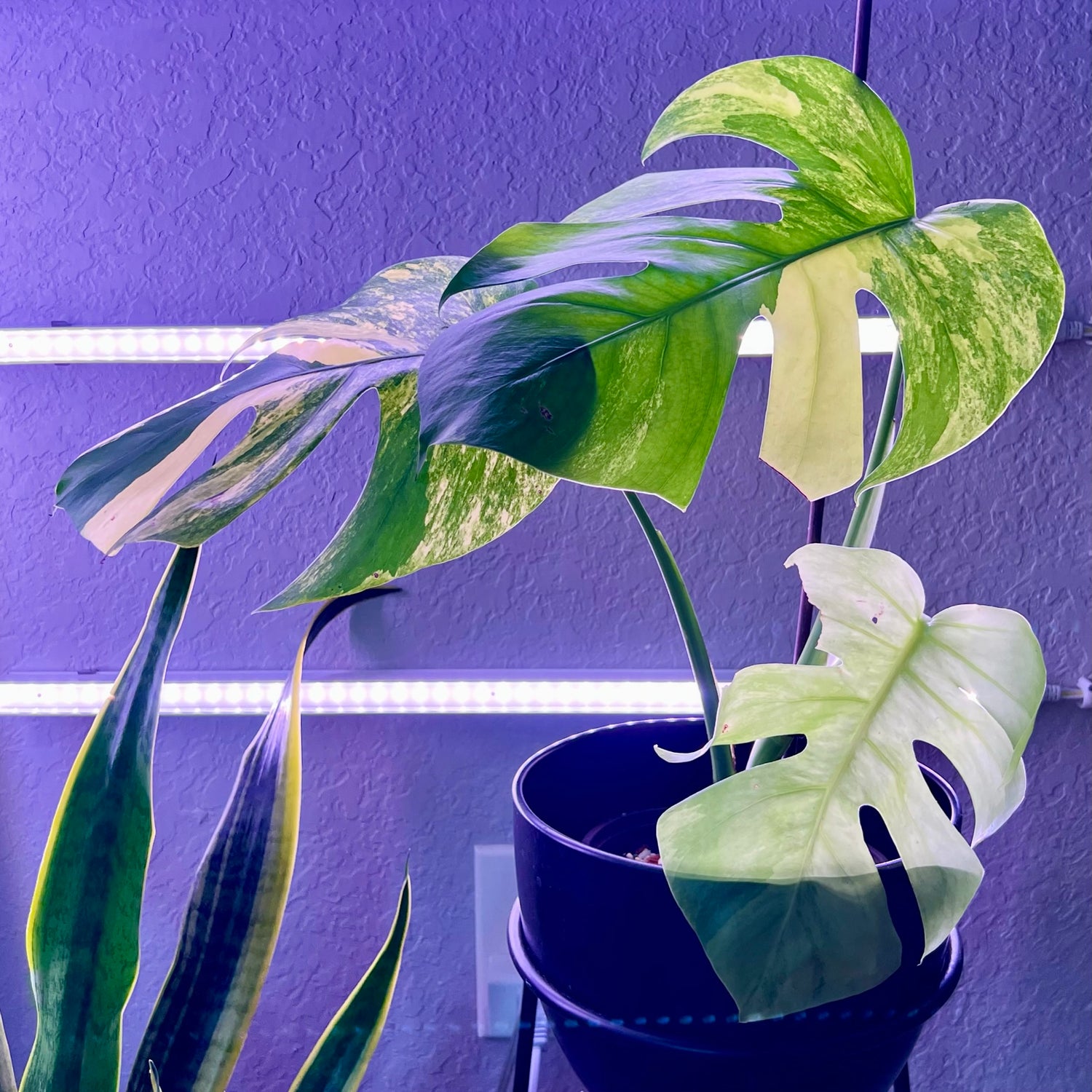Scindapsus Treubii Dark, also known as "Moonlight," is a unique and beautiful plant that is native to Southeast Asia. It is known for its striking dark green leaves and silver markings, which give it a distinctive appearance.
Light
Scindapsus Treubii Dark is a low light plant and prefers to be in indirect or filtered light. Direct sunlight can scorch its leaves, so it is best to keep it away from windows or in a bright but shaded area.
Water
Water your Scindapsus Treubii Dark once a week, or when the top inch of soil feels dry to the touch. Avoid overwatering, as this can lead to root rot. Make sure the pot has drainage holes to allow excess water to drain away.
Humidity
Scindapsus Treubii Dark prefers high humidity, so it is a good idea to mist it regularly or place it near a humidifier. You can also place a tray of water near the plant to increase the humidity around it. Avoid placing it near air conditioners or heaters, as this can dry out the air.
Temperature
Scindapsus Treubii Dark prefers temperatures between 60 and 85 degrees Fahrenheit. It can tolerate lower temperatures, but is sensitive to frost and cold drafts.
Soil
Scindapsus Treubii Dark prefers well-draining soil that is rich in organic matter. You can use a potting mix for tropical plants, or create your own mix using equal parts perlite, peat moss, and potting soil.
Fertilizer
Fertilize your Scindapsus Treubii Dark once a month during the growing season (spring and summer) using a balanced fertilizer. Follow the instructions on the packaging carefully to avoid over-fertilizing.


